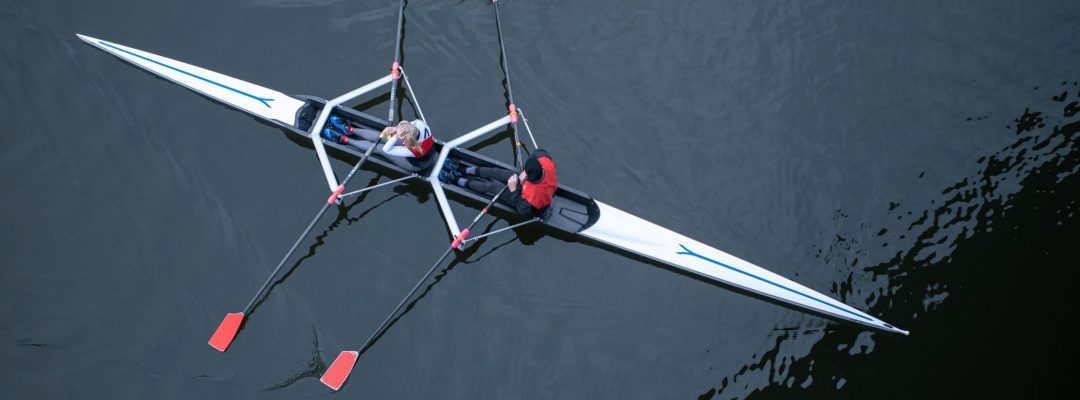In recent years, 3D printing technology has been revolutionizing the manufacturing industry. With its ability to create complex geometries, reduce costs, and improve efficiency, 3D printing is increasingly being used in various fields, including the sports industry. One of the most exciting applications of 3D printing in sports is the creation of racing sculls, which are the narrow boats used in competitive rowing. In this blog, we will explore how 3D printing is used to create racing sculls, and the benefits it offers.
Traditionally, racing sculls are made from lightweight materials such as carbon fiber, fiberglass, and Kevlar. The manufacturing process involves laying up layers of these materials over a mold and then curing them in an autoclave or oven. While this process produces high-quality sculls, it is time-consuming, expensive, and requires skilled labor.
3D printing, on the other hand, offers several advantages over traditional manufacturing methods. It can produce parts with complex geometries that are difficult to manufacture using traditional methods. This is particularly useful in creating racing sculls, which have complex shapes and contours to optimize performance. Additionally, 3D printing allows for precise control over material distribution, reducing the overall weight of the scull and improving its speed.
To create a racing scull using 3D printing, a 3D model is first created using computer-aided design (CAD) software. The 3D model is then sliced into layers, and each layer is printed one at a time using a 3D printer. The printer builds up the layers of the scull using a variety of materials, including carbon fiber composites, plastics, and metals. The finished scull is then post-processed, which involves removing any support structures and finishing the surface.
In addition to improving performance, 3D printing can also reduce the cost and time required to manufacture racing sculls. Traditional manufacturing methods require expensive tooling and skilled labor, which can drive up the cost of production. 3D printing eliminates the need for tooling, and the manufacturing process is more automated, reducing the need for skilled labor. This can result in a significant reduction in production costs and lead times.
In conclusion, 3D printing technology offers exciting possibilities for the sports industry, particularly in the creation of high-performance racing sculls. With its ability to create complex geometries, reduce weight, and improve performance, 3D printing is changing the way racing sculls are manufactured. As the technology continues to evolve, we can expect to see more innovative applications of 3D printing in sports, and the creation of even more advanced and efficient racing sculls.
The traditional method of manufacturing racing skulls involves using molds to shape the hull and deck of the boat from fiberglass or carbon fiber. This process is time-consuming and expensive, requiring a high level of skill and expertise. With 3D printing, however, the manufacturing process can be significantly streamlined, allowing for greater precision and accuracy in the design.
Using 3D printing, designers can create digital models of the racing skull using specialized software. These models can then be printed layer by layer using a variety of materials, including plastic, resin, and even metals such as titanium. The resulting product is a highly precise, lightweight racing skull that is tailor-made to the exact specifications of the rower.
One of the primary benefits of using 3D printing for racing skulls is the ability to create highly customized designs. With traditional manufacturing methods, it can be difficult and expensive to make changes to the shape and design of the boat. However, with 3D printing, designers can easily modify the digital model to create a custom design that meets the specific needs of the rower.
Another benefit of using 3D printing is the ability to produce racing skulls more quickly and efficiently. Traditional manufacturing methods can take weeks or even months to produce a single boat. With 3D printing, however, the process can be completed in a matter of days, allowing rowers to get on the water and start training sooner.
In addition to being faster and more efficient, 3D printing also offers significant cost savings compared to traditional manufacturing methods. Because the process is digital, there are no molds or other specialized equipment required, which can significantly reduce the cost of production.
Finally, 3D printing also allows for greater experimentation and innovation in the design of racing skulls. Because it is so easy to modify and test different designs using 3D printing, designers can quickly iterate on new ideas and push the boundaries of what is possible in the world of rowing.
In conclusion, 3D printing is an innovative and powerful technology that is transforming the world of racing skulls. By offering greater precision, customization, efficiency, and innovation, 3D printing is helping rowers to achieve their goals faster and more effectively than ever before. As this technology continues to evolve and improve, we can expect to see even more exciting advancements in the field of rowing and other sports.

